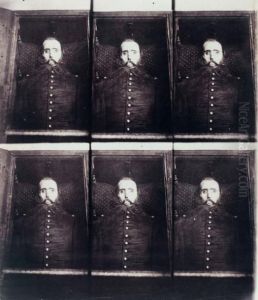Francois Aubert Paintings
François Aubert was a French photographer born in 1829, not widely known outside the realm of historical photography enthusiasts. His work, however, holds a significant place in the history of photography, especially in the context of documenting important historical events and figures in the 19th century. Aubert moved to Mexico in the 1860s, a period marked by significant political turmoil and the French intervention in Mexico.
During his time in Mexico, Aubert established a photography studio in Mexico City and began to document the events and people of the era. He became known for his coverage of the reign and eventual downfall of Emperor Maximilian I of Mexico, a member of the Habsburg family who was installed as the Emperor of Mexico by Napoleon III of France. Aubert's photographic work during this period is particularly noted for its historical value, including his photographs of the execution of Maximilian in 1867. These images are some of the few visual accounts of the event, capturing the end of the Second Mexican Empire.
Aubert's photographs provide a unique and valuable insight into the people, culture, and political events of Mexico during the 1860s. His portraits of Maximilian, as well as Mexican republican leaders such as Benito Juárez and Porfirio Díaz, are notable for their composition and detail. In addition to his political and cultural work, Aubert also captured everyday life in Mexico, contributing important anthropological and social perspectives of the time.
Despite his significant contributions to the field of photography and the historical record of 19th-century Mexico, Aubert's work did not gain the same recognition as some of his contemporaries. However, his photographs are still studied and appreciated by historians and art historians for their technical quality and documentary value. François Aubert died in 1906, leaving behind a legacy as a chronicler of one of the most turbulent periods in Mexican history.
